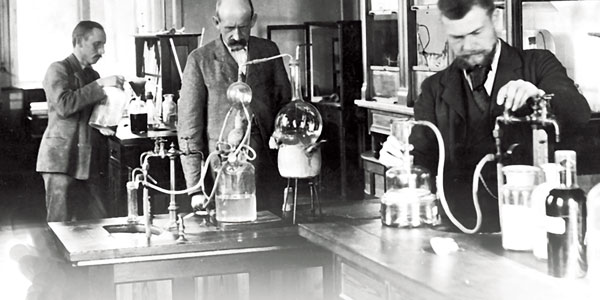In a nutshell: Ruedi Hartmann, BUCHI
- Like
- Digg
- Del
- Tumblr
- VKontakte
- Buffer
- Love This
- Odnoklassniki
- Meneame
- Blogger
- Amazon
- Yahoo Mail
- Gmail
- AOL
- Newsvine
- HackerNews
- Evernote
- MySpace
- Mail.ru
- Viadeo
- Line
- Comments
- Yummly
- SMS
- Viber
- Telegram
- Subscribe
- Skype
- Facebook Messenger
- Kakao
- LiveJournal
- Yammer
- Edgar
- Fintel
- Mix
- Instapaper
- Copy Link
Posted: 3 July 2012 | Helen Bahia, Editor, New Food | No comments yet
Ruedi Hartmann, Product Group Manager Distillation & Extraction, discusses the Kjeldahl method and how BUCHI are still innovating with a century-old process.


In 1883, Danish chemist Johan Kjeldahl was searching for a method to determine the quality of raw materials used for the production of beer at the well-known Carlsberg brewery in Denmark. Production process optimisation was already in practice, as was product quality control. Tasked with finding the amount of protein in grain used in the brewing industry, Kjeldahl wanted to determine the nitrogen content in a sample but existing methods were inaccurate. The Kjeldahl method involves distillation and titration and remains the universally accepted official method for estimating the protein content in the food and beverage industry.
Meanwhile, in 1939, BUCHI began as a oneman glass-blowing workshop before develop – ing into the inventor of the Rotavapor® and innovator of laboratory instruments based on evaporation and vacuum technologies as well as near infrared spectroscopy and distillation and extraction for quality control.
These two stories converge with the latest innovation in classical nitrogen and protein determination, the KjelMaster K-375. “The KjelMaster K-375 meets the highest demands in usability, automation, user administration and sophisticated data manage – ment,” says Ruedi Hartmann, Product Group Manager Distillation & Extraction. “With the KjelSampler and DigestAutomat, the technique of sample transfer by steam overpressure offers space saving due to a compact footprint, low maintenance costs as an error-prone lifting mechanism is avoided and time-saving because sample tubes are clean at the end of the process and don’t require extensive cleaning.”
A special feature of the KjelSampler K-377 is the two independent rack trays which allow a continuous workflow with a high sample throughput by using just one digestion / distillation / titration system. “Any official regulation can be easily fulfilled as one can choose either the potentiometric or colorimetric titration mode,” explains Hartmann. “You can now change between the two techniques without any effort by ‘plug and measure’ with no additional modifications to the instrument.” Results from the sample are automatically stored in a database that guarantees traceability for months and even years and archiving is straightforward.
“For routine measurements of multiple samples, KjelLink is a new software package for state-of-the-art data exchange between a distillation unit and LIMS,” Hartmann describes. “The new Kjeldahl instruments from BUCHI are also environmentally considerate. With the help of dedicated catalysts, the amount of chemicals used for the digestion process can be significantly reduced and hazardous substances can be avoided. Also the unique four step gas scrubbing system of the Scrubber K-415 efficiently copes with aggressive acids or alkali fumes – water consumption is then minimised with the help of the automatic cooling water control.”
Just one example of using the Kjeldahl method in the food and beverage industry is protein determination in milk. “Milk is a valuable foodstuff,” Hartmann explains. “Milk contains healthy protein for muscles, calcium for strong bones and teeth, milk sugar for good digestion and vitamins for a strong immune system.” Europe produces around 148 million tonnes of milk per year and milk consumption is rising worldwide, particularly in the form of processed dairy foods. The Kjeldahl method can be used to determine the composition of protein in milk, which can affect the price of milk and the breeding value of cows, for example. The Kjeldahl method is also important for deter – mining proteins in other dairy products, meat, beer, cereals and pasta, amongst others.



